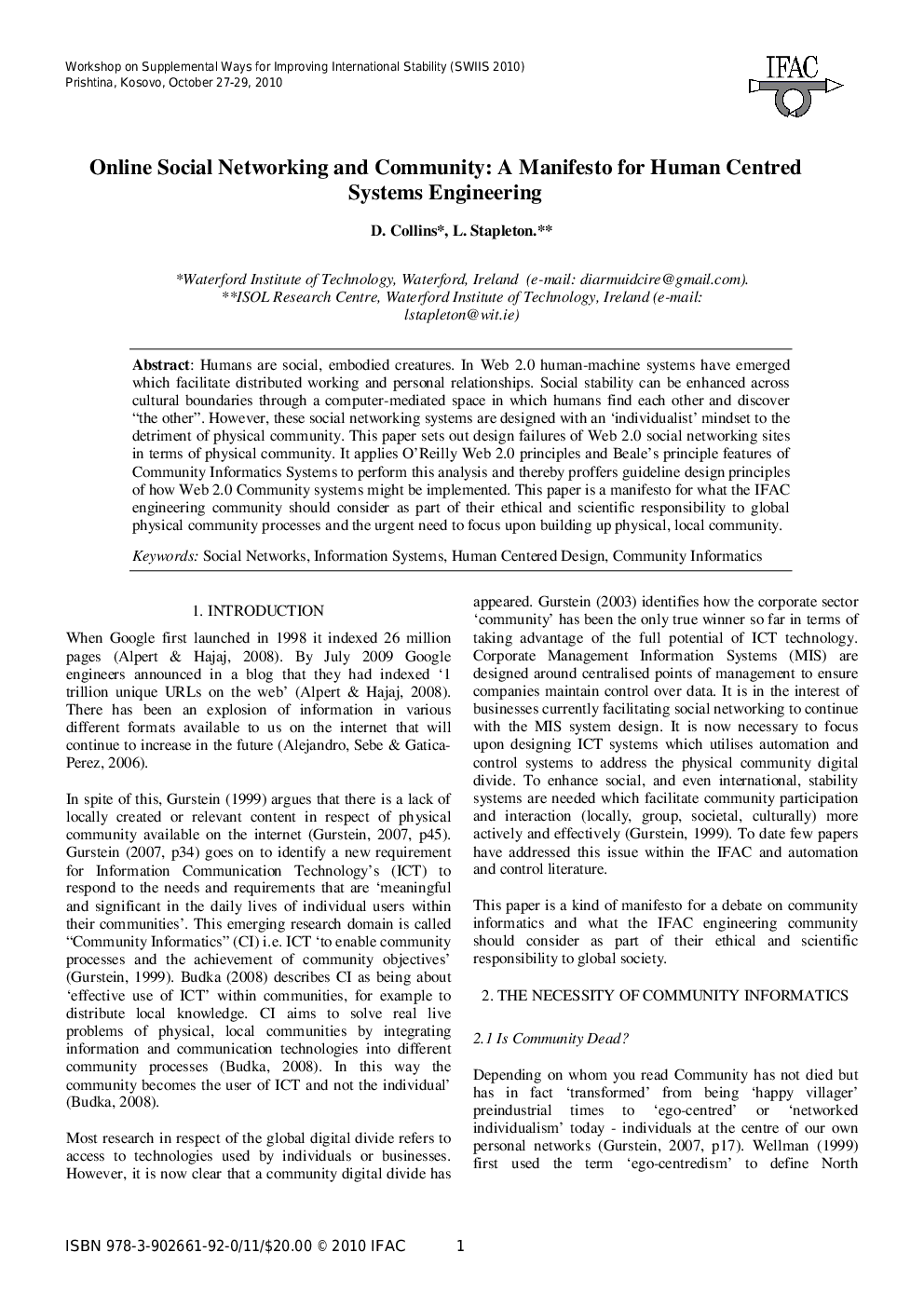| کد مقاله | کد نشریه | سال انتشار | مقاله انگلیسی | نسخه تمام متن |
|---|---|---|---|---|
| 709943 | 892094 | 2010 | 6 صفحه PDF | دانلود رایگان |

Humans are social, embodied creatures. In Web 2.0 human-machine systems have emerged which facilitate distributed working and personal relationships. Social stability can be enhanced across cultural boundaries through a computer-mediated space in which humans find each other and discover “the other„. However, these social networking systems are designed with an “individualist„ mindset to the detriment of physical community. This paper sets out design failures of Web 2.0 social networking sites in terms of physical community. It applies O'Reilly Web 2.0 principles and Beale's principle features of Community Informatics Systems to perform this analysis and thereby proffers guideline design principles of how Web 2.0 Community systems might be implemented. This paper is a manifesto for what the IFAC engineering community should consider as part of their ethical and scientific responsibility to global physical community processes and the urgent need to focus upon building up physical, local community.
Journal: IFAC Proceedings Volumes - Volume 43, Issue 25, 2010, Pages 133-138